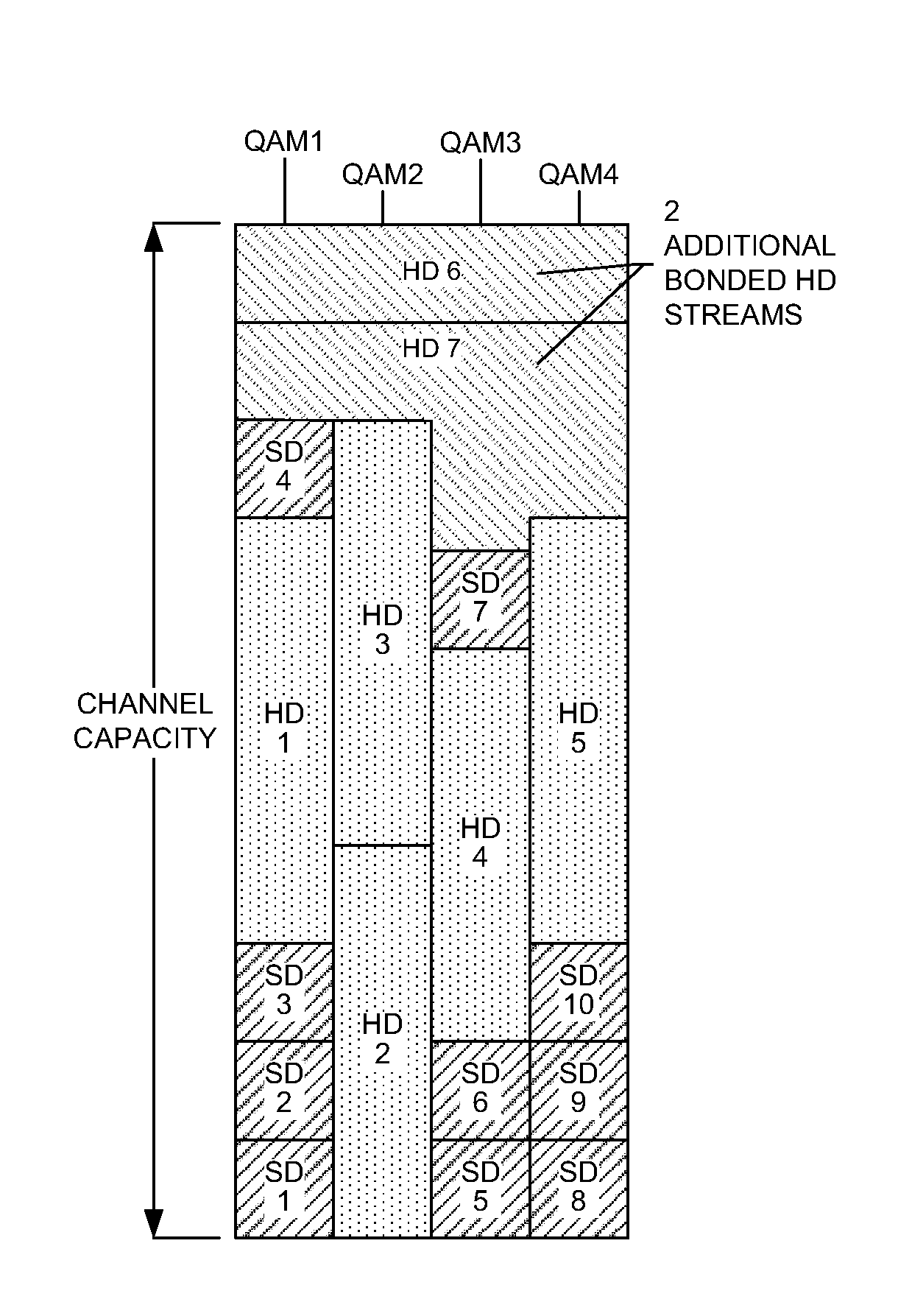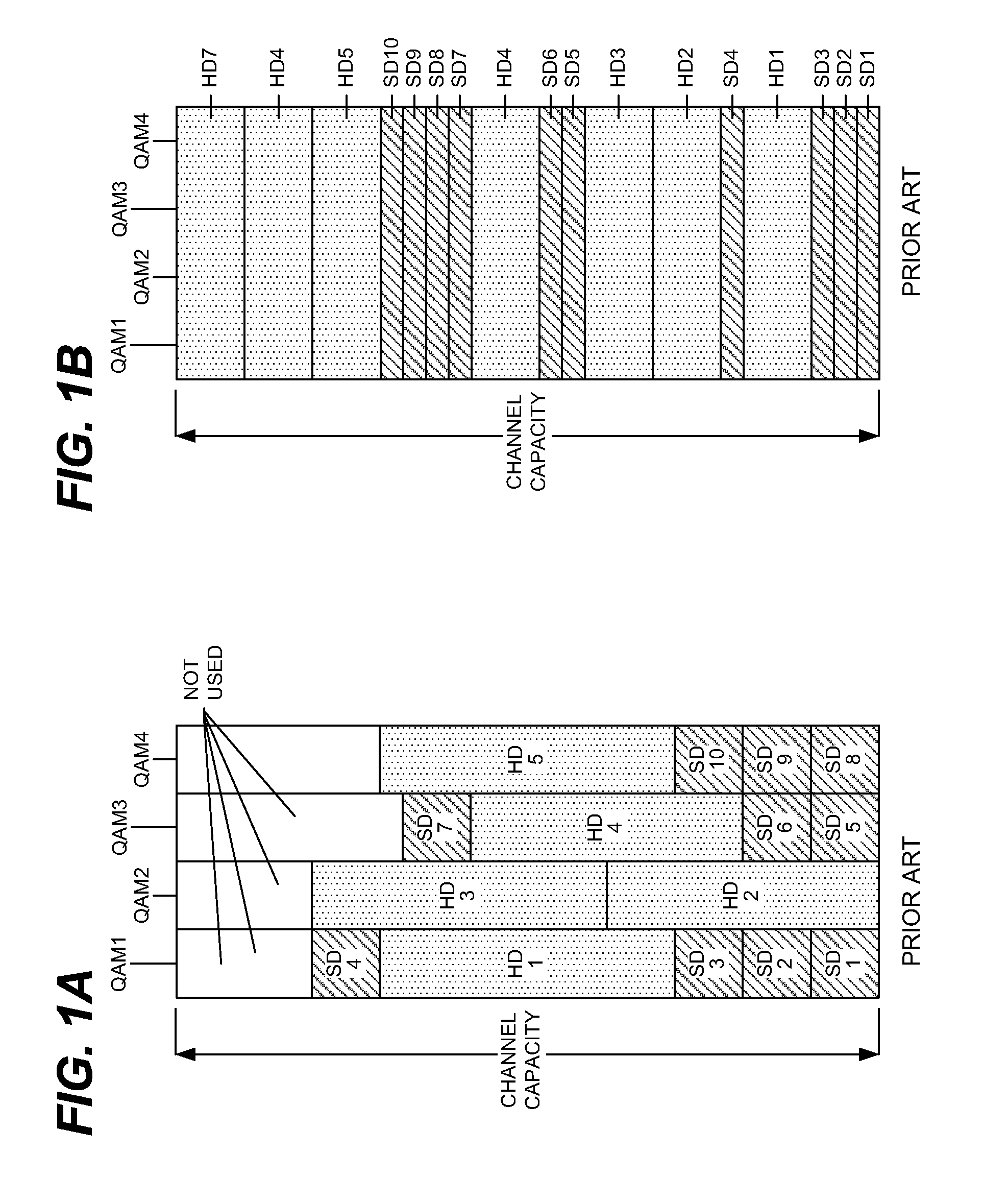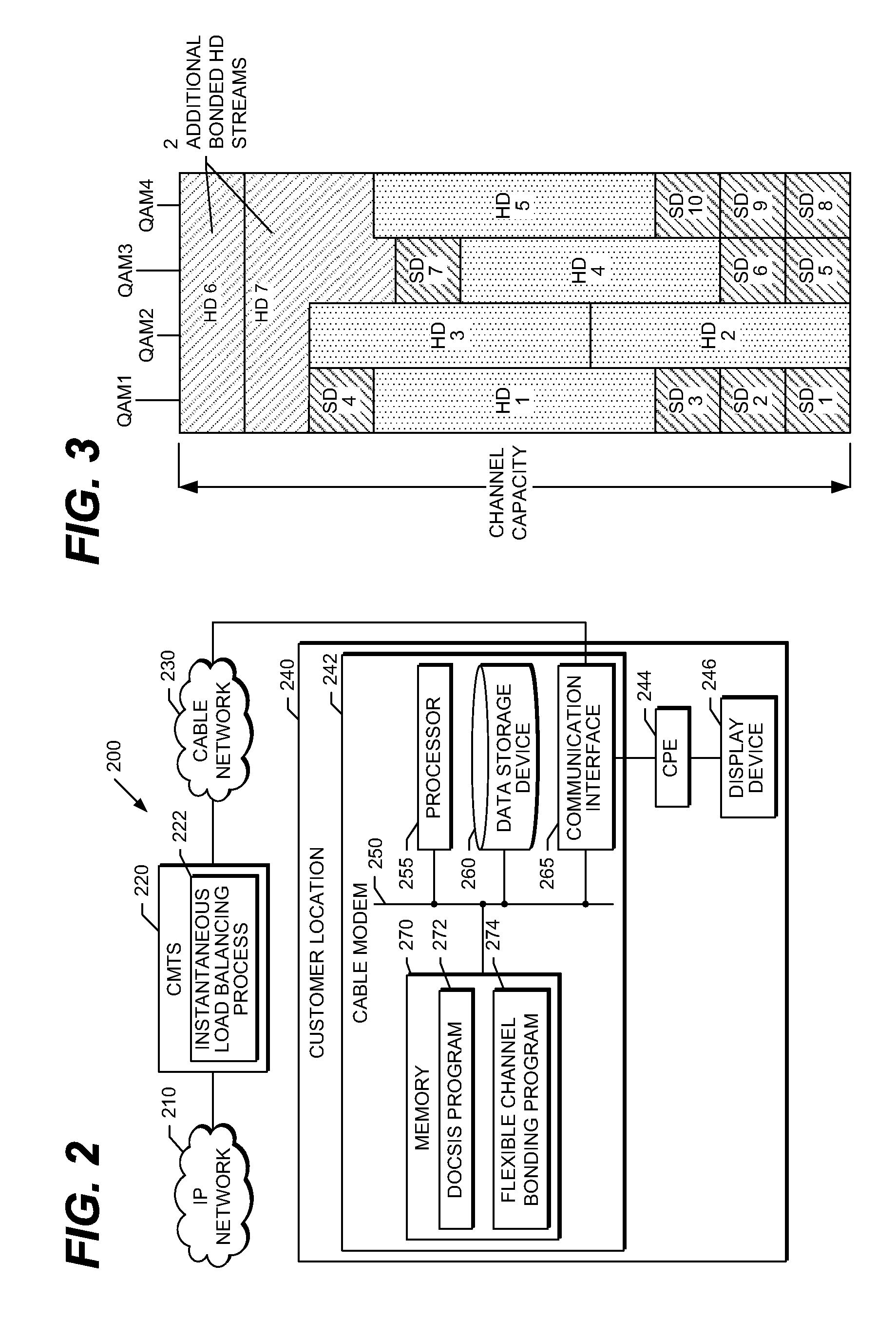IP video delivery using flexible channel bonding
- Summary
- Abstract
- Description
- Claims
- Application Information
AI Technical Summary
Benefits of technology
Problems solved by technology
Method used
Image
Examples
Embodiment Construction
[0019]Aspects of the present invention address how to leverage VBR for IP Video services to support significantly more video streams than CBR, without incurring the dropped packets or the drawbacks of other state of the art implementations.
[0020]FIG. 2 is a network diagram that illustrates one embodiment of the hardware components of a system that performs the present invention. A broadband network 200 includes an Internet Protocol (IP) network 210 and a cable network 230. In one embodiment, the cable network 230 is a hybrid fiber-coaxial (HFC) network. The cable network 230 is a data and video content network that connects a customer location 240 to a cable modem termination system (CMTS) 220. The broadband network 200 shown in FIG. 2 may include any number of interconnected IP network 210, CMTS 220, cable network 230, and customer location 240.
[0021]The IP network 210 shown in FIG. 2, in one embodiment, is a public communication network or wide area network (WAN) that connects to ...
PUM
 Login to View More
Login to View More Abstract
Description
Claims
Application Information
 Login to View More
Login to View More - R&D
- Intellectual Property
- Life Sciences
- Materials
- Tech Scout
- Unparalleled Data Quality
- Higher Quality Content
- 60% Fewer Hallucinations
Browse by: Latest US Patents, China's latest patents, Technical Efficacy Thesaurus, Application Domain, Technology Topic, Popular Technical Reports.
© 2025 PatSnap. All rights reserved.Legal|Privacy policy|Modern Slavery Act Transparency Statement|Sitemap|About US| Contact US: help@patsnap.com



